By Douglas Klug
All photos © 2024 Douglas Klug
Thousands of divers explore Southern California’s underwater world every year, and with good reason. The region has amazing kelp forests, reefs teeming with all types of life, and best of all, the opportunity for incredible marine-mammal encounters.
Marine mammals include pinnipeds like the curious harbor seals and the boisterous California sea lions. A dive with either of them will delight, fascinate, and humble even the most seasoned diver. Highly intelligent, they have the capacity to have true interactions with divers beyond a simple swimming pass that allows divers to say, “I saw that.” Because they are air-breathing mammals, many times encounters can occur in the shallows, at or near the surface where there is plenty of ambient sunlight for the diver or underwater photographer to truly enjoy the spectacle.
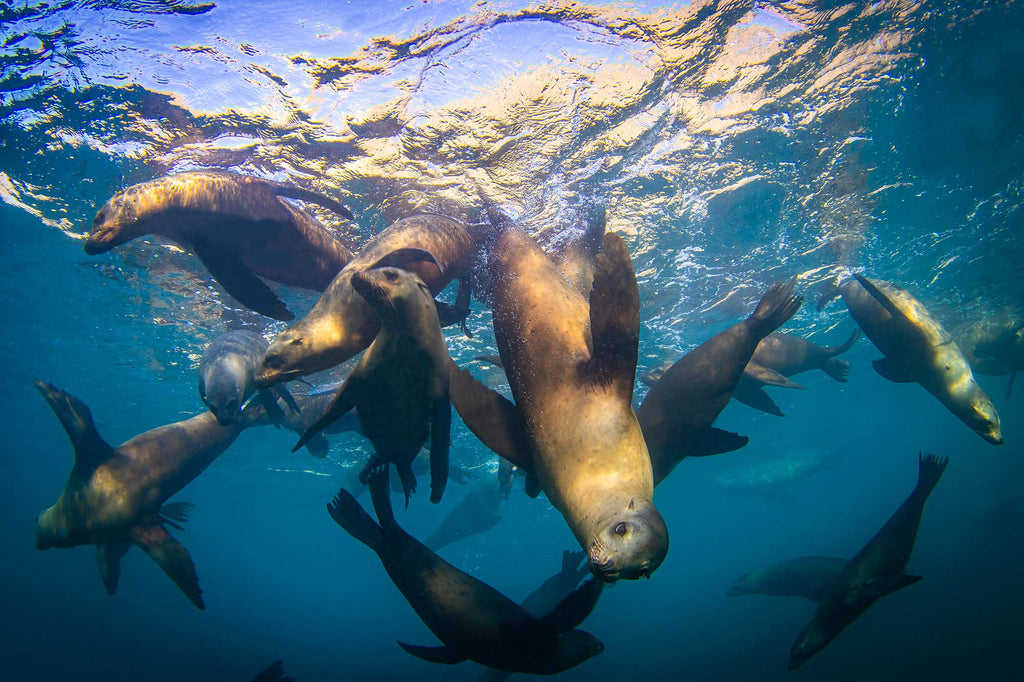
Even while keeping the guidelines of proper marine mammal interaction etiquette in mind, there’s no escaping from a raft of sea lions when they take interest in a diver. Within seconds, I was surrounded by dozens of them zooming past in every direction.
In US waters, marine mammals, including seals and sea lions, are protected by the US Marine Mammal Protection Act. This makes it illegal to harass in any form. Interactions with marine mammals should ALWAYS take place on the animal’s terms, allowing the animal to approach if it chooses to do so. Divers should never chase, corner, or grab at a seal or sea-lion, even one that gets very close like it wants to be “pet”. Even without their legal protection, these are wild animals that are stronger and faster in the water than any human. They have powerful jaws and sharp teeth evolved to catch and kill the sea life they feed on. Divers have been seriously injured by seals and sea lions when they pushed boundaries, and a seal or sea lion perceived the diver as some type of threat.
Getting the Shot
Here’s a few images from a single day of diving Southern California’s Anacapa Island in the Channel Islands National Park. All these images were shot over two different dives while following the guidelines I listed above about interacting with sea lions and harbor seals.

Unlike some larger marine animals, sea lions are not shy. They tend to be playful like puppies and often bump into divers as they cruise by.
Some would accidentally (I think) bump into me as they flew by or pause to bark a stream of bubbles in my face. Others would tug on my snorkel or camera strobes, but the interactions were playful and not aggressive. As they zipped around me, I captured these images that showed off just how many there were!
Camera Settings for Sea Lions
Sealions are in constant motion. Using strobes set to TTL, even with bright sunlight at the surface, helps to freeze the motion and fill in the shadows. Faster shutter speeds of 1/125 second to 1/160 second with intermediate range aperture such as f/8 or f/9 are the key to capturing images without blur. For Canon shooters, the AI Servo auto-focus does a great job of tracking the focal subject as it travels through the frame.
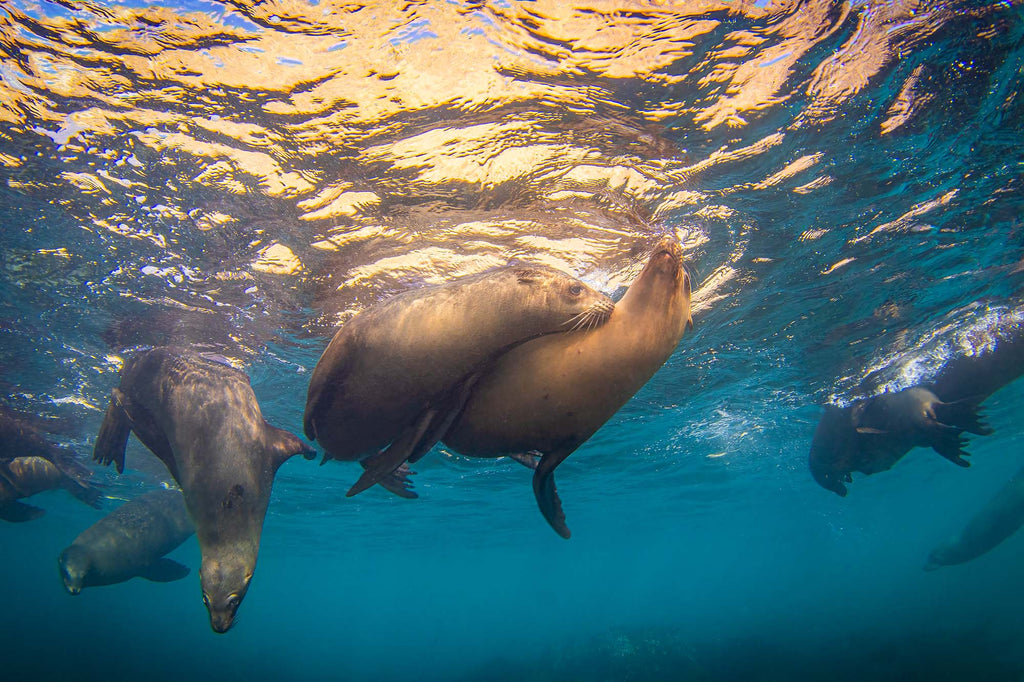
Sea lions are generally brown in color and tend to be larger than harbor seals, with external ear flaps.
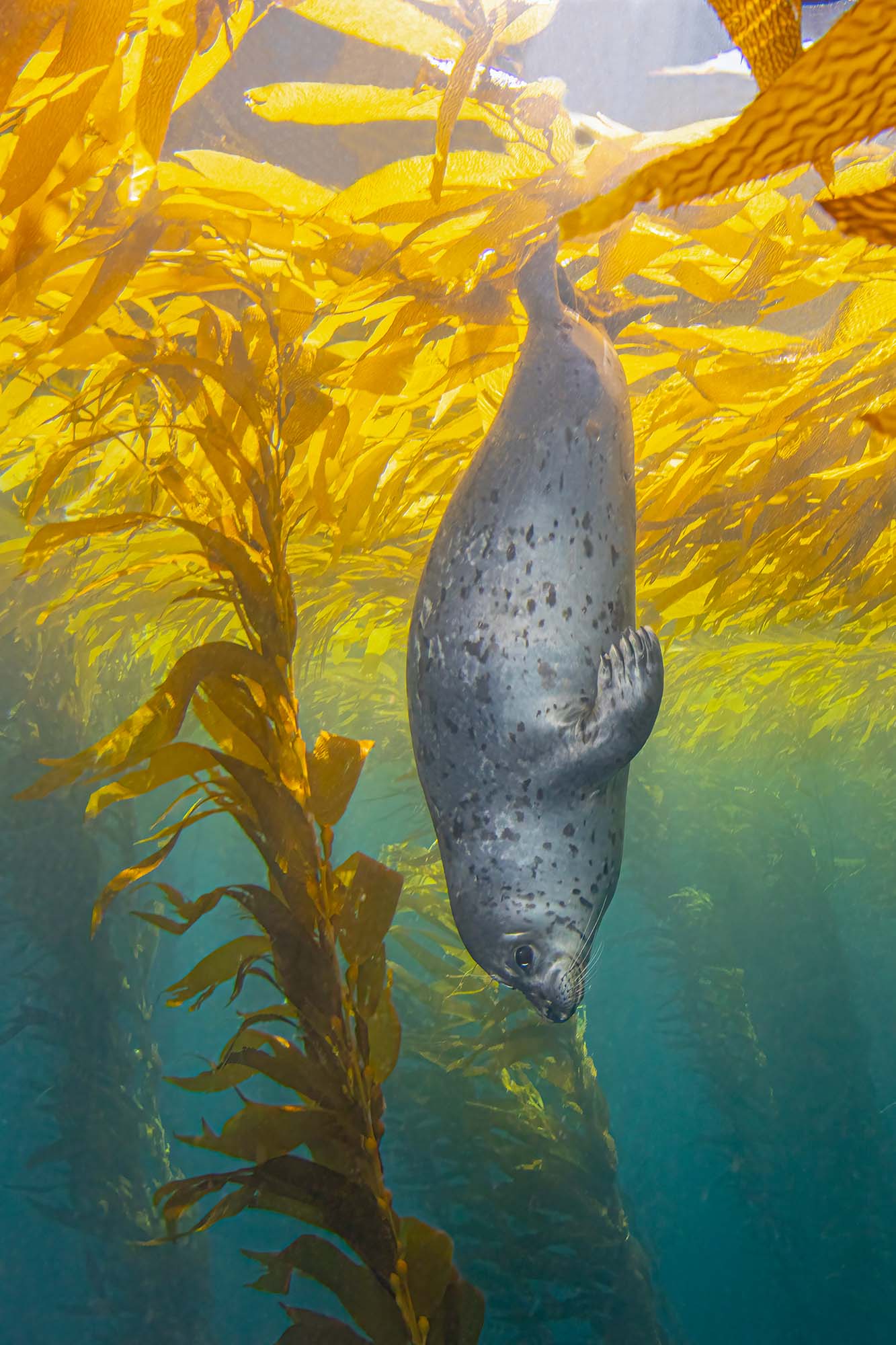
A harbor seal has smaller body, smaller flippers, and ear holes with no flap.
Harbor seals are more reserved and curious than sea lions. They prefer an aloof, stealthy approach, often playing hide-and-seek with divers as they approach ever closer. Harbor seals will use the twists and turns in the kelp forest to their advantage, dodging around kelp “trees” to try and keep something between themselves and the diver.
Many of my successful harbor seal photographic interactions have occurred when I acted as if I was trying to ignore or even get away from a harbor seal, piquing its curiosity about me and giving it a reason to get closer.
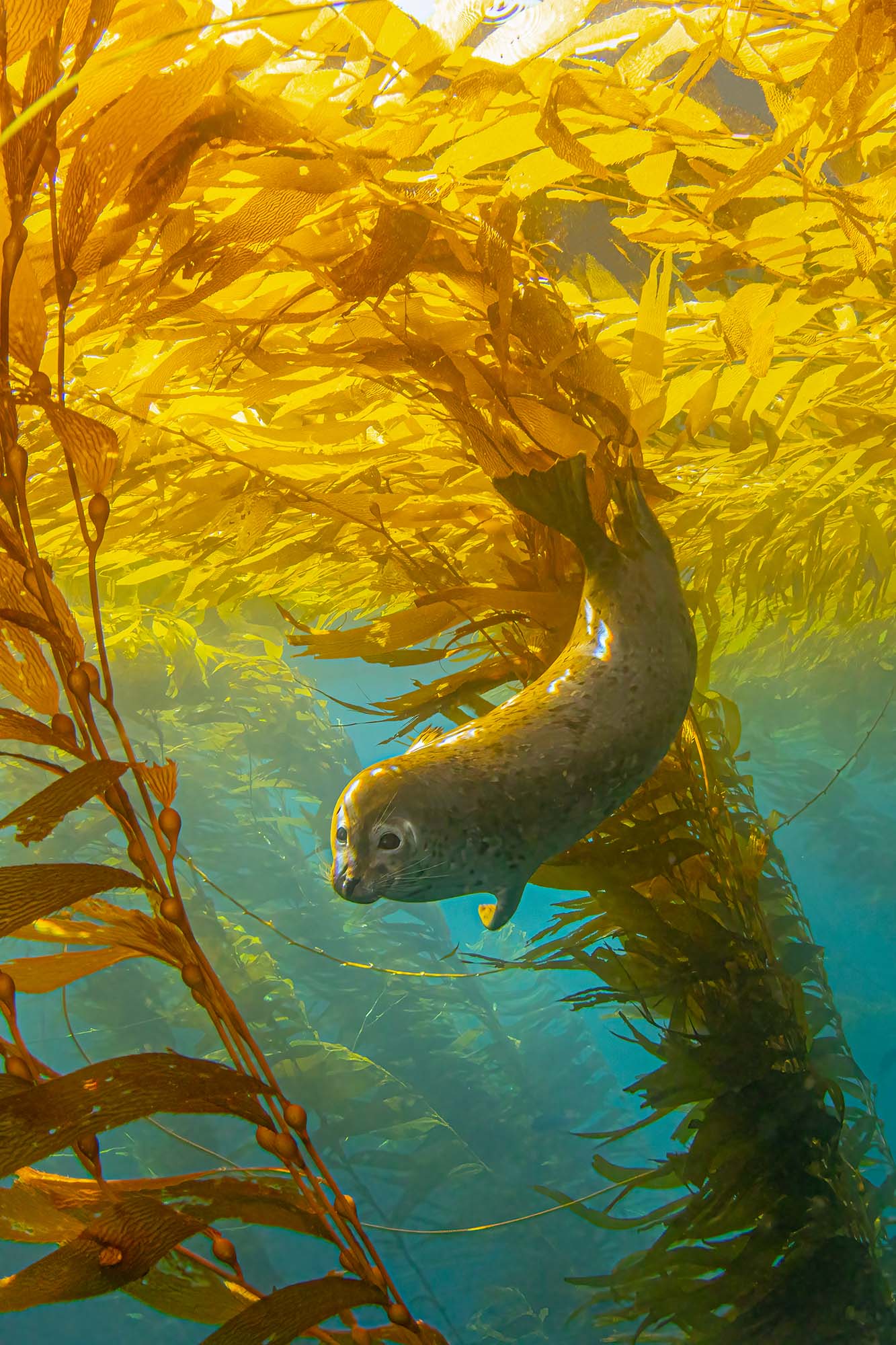
Harbor seals are more shy, but if they become interested in you they have a tendency to slow down and make eye contact, which is a dream for underwater photographers.
With their curious nature, when they choose to interact, harbor seals tend to pause and hang while looking right at a diver and making a great photo model. Their habit of hiding themselves against kelp means that the photographer might have to turn their rig sideways to maneuver through the kelp forest for the shot.
Camera Settings for Seals
Since they move with less motion and speed than sea lions, I shot these at a slightly slower speed, 1/125 second, but with a higher aperture around f/13 or f/14 to balance out the bright sunlight reflecting off the seal’s silver colored coat. Seals don’t seem to care at all about the light from the dual TTL strobes I use fill in the shadows on the underside of the seal created by the overhead sunlight.
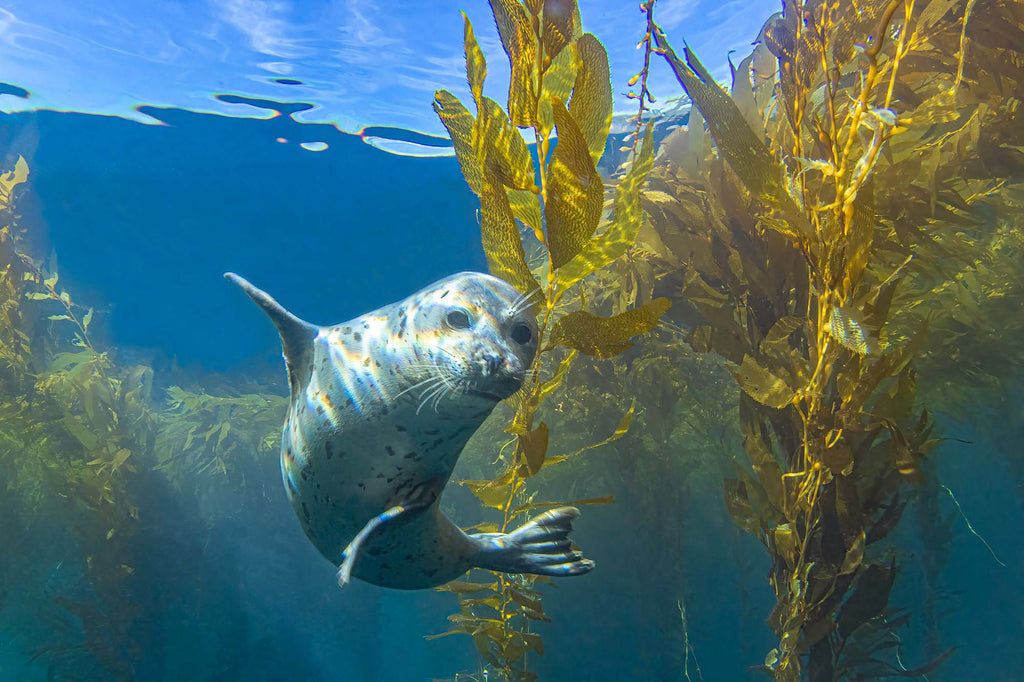
Seals don’t “walk” on land like sea lions do. Their small flippers are only suited for wriggling around on their bellies. Underwater, they like to play and hide among the kelp.

A small burst of TTL strobes highlights the harbor seal’s spotted underside.

They say that seals don’t actually eat the kelp, but they eat the fish that live in it.
Additional Reading
Underwater Cathedrals: Shooting Magnificent Kelp Forests
Lundy Island: The Best Seal Diving in the World
Color Grading S-Log 3 Sea Lion Footage in Adobe Premiere [VIDEO]
Customer Photos | Douglas Klug in California's Kelp Forests and Beyond
The Brutal Impact of Fisheries on Sea Lions in Mexico
Kelp Forest Underwater Camera Settings and Technique

Douglas Klug has been diving California’s Channel Islands for over 30 years as a SCUBA diving instructor and underwater photographer in Santa Barbara, CA. Doug specializes in underwater photography within the kelp forest environment. His photo-essays have been published in print world-wide, including articles in California Diving News, DAN Alert Diver, and Dive Training. Doug’s images have been used in many publications and by the US National Park Service, US National Marine Sanctuary, the Monterey Bay Aquarium, Google, and Microsoft. Doug even does live talks on underwater photography for dive clubs and museums in Southern California. See more...











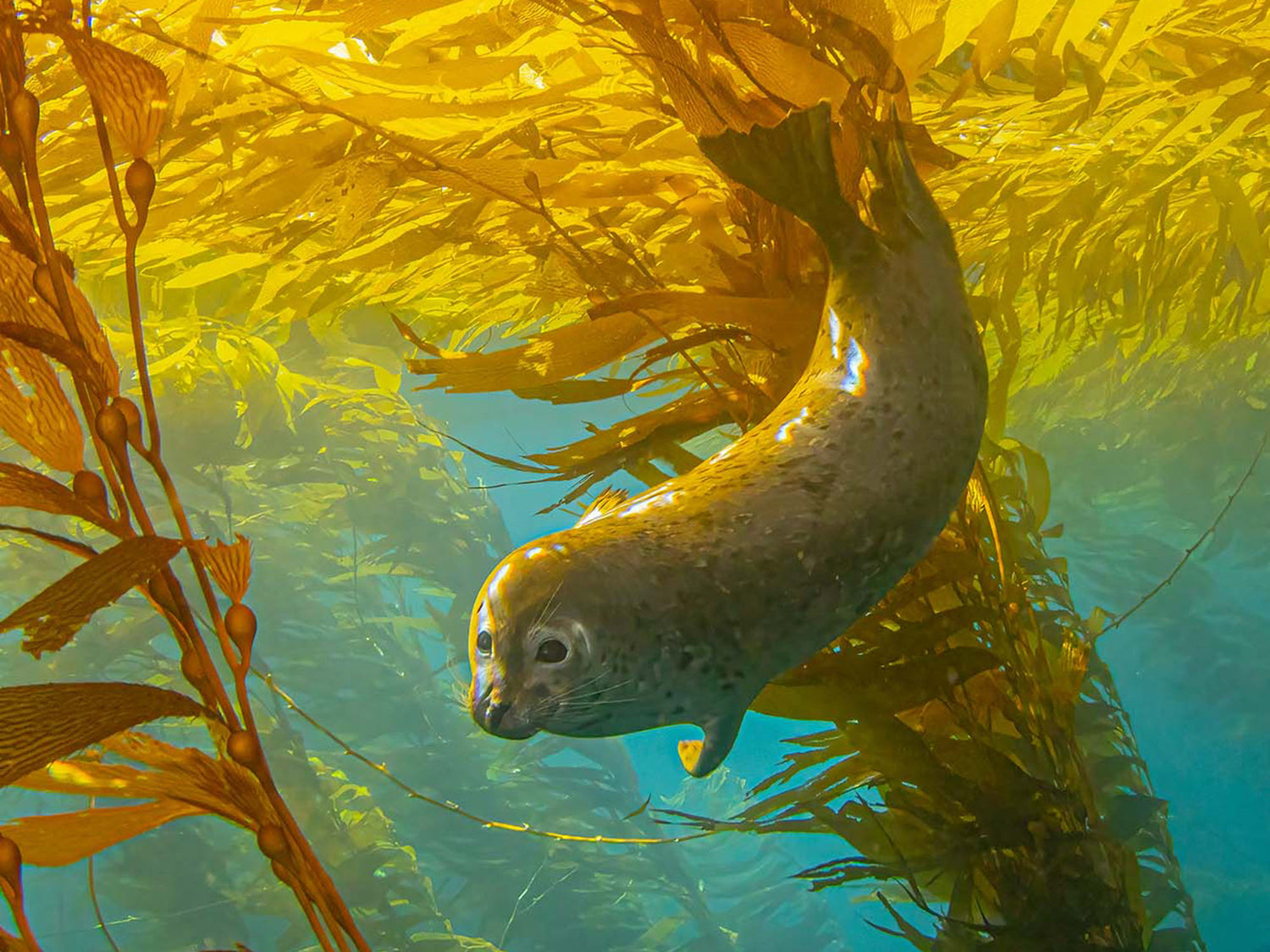
![BURST shooting // Using Drive Mode to your advantage underwater [VIDEO]](http://www.ikelite.com/cdn/shop/articles/Using_Drive_Mode_to_Your_Advantage_copy.jpg?v=1712943731&width=2000)
![Tips for Shooting Split Shots with Your Underwater Housing [VIDEO]](http://www.ikelite.com/cdn/shop/articles/tips-for-shooting-split-shots-underwater-housing.jpg?v=1713486663&width=2000)